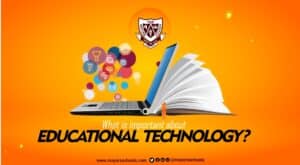Why is Edtech (Educational Technology) Important?

Why is Edtech (Educational Technology) Important?
Educational technology simply means technology aided education. It can include the use of computers, computer programs, or learning systems to provide education and training to students and professionals.
Technology was introduced to education as a part of keeping pace with the innovations in the field. So, edtech has been around for a while, from the time computers were used in education. Then, with the wide use of the Internet, online courses were introduced, thus making edtech part of remote learning, distance learning or online learning.
The use of edtech has only progressed with time. The pandemic and the field of education adapting to the changes, there has been a sudden boom in use of edtech. Today, there are many technologies that are sources of learning, teaching, and communication between students and mentors that edtech has become more accessible and efficient.
Is it Cost Effective?
Let us be honest here-Technology is expensive.
But if you compare the efficiency, you might understand that edtech has an upper hand over the traditional education systems. Most of us are used to the traditional way of learning, and we ourselves have experienced how the method lacks in many ways.
Edtech is more inclusive. It accommodates all kinds of learners and helps in closing the gaps in traditional methods of learning. This helps students to learn on their own accord, while making the most of all learning resources—something they might not get to do in a traditional classroom setup. In short, every penny spent on learning becomes worth it.
Edtech also helps to cut down extra expenses, in terms of infrastructure costs, labor costs, and much more. All you need is a stable internet connection and a mobile device. The best part is you do not necessarily have to go to an institution. Learning is possible even within the comforts of your home. This has contributed to a significant decrease in costs spent on hardware, which makes up to 60% of the IT budget of educational institutions.
Advantages
As mentioned above, edtech definitely has an upper hand compared to the traditional way of learning as it closes many gaps that exist in the traditional teaching and learning system.
There are many advantages of using edtech.
Edtech makes learning easier, efficient, affordable and accessible to all students, despite the learning differences. It also helps educational institutions to stay innovative, while reducing the extra expenses. For educators, edtech serves as a huge relief, taking many of the additional responsibilities off their shoulders, while helping them to carry on their tasks with efficiency and accuracy.
What more does edtech have to offer?
Let us have a closer look.
Promotes Immersive Learning
Edtech provides learning resources that are not only informative, but keeps learners engaged at a deeper level. Also, the interactive content helps students understand the concepts in a better manner.
One good example is teachers using Google Maps while teaching their students about a country and its geography. Teachers will be able to take students on a virtual tour, and the visual experience will help students to understand the subject better.
There are many similar learning applications and platforms that cover almost all important topics of different subjects. Many of these applications even use virtual reality or augmented reality for students to virtually experience the concepts.
Allows Personalized Learning
Our traditional educational systems do not really acknowledge the fact that every student is different. Some are fast learners, while some need their own time to learn.
Some cannot wrap their head around the theoretical concepts taught in school and might need some extra attention. There are also students who are differently abled. But there were many times, the traditional way of learning could not accommodate all of them.
Edtech, on the other hand, encourages self-paced, personalized learning. Many platforms provide learning resources that the students can refer to whenever they want. Also, it helps teachers to focus on each student individually and in real time, and keep up with their progress.
Some of these applications or platforms also collect information, with regard to the performance of the students, so that teachers can evaluate each student’s performance individually and help them in areas that require improvement.
Credit| @Edsys / Google trends / edunews

